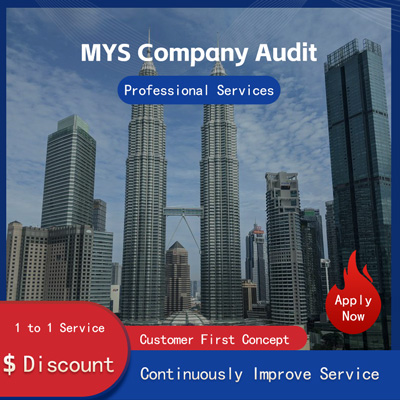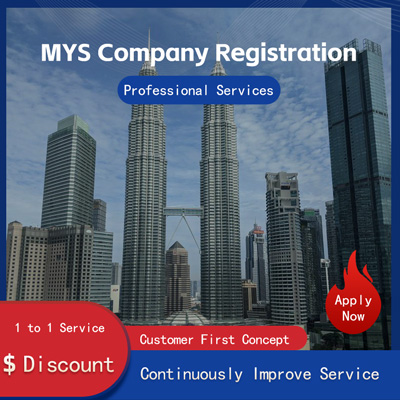
How to Comply with Regulations When Transferring Funds from Domestic Companies to Offshore Accounts A Full Process Analysis
Translation
In the context of global economic integration, an increasing number of companies are choosing to transfer part of their funds to offshore accounts in order to diversify assets, optimize tax structures, and improve capital operation efficiency. For domestic Chinese enterprises, how to complete this process in a compliant and smooth manner has become a key concern for many business managers. This article will provide a detailed analysis from the perspectives of policy background, operational procedures, and important considerations.

1. Policy Background and Compliance Prerequisites
In recent years, China has continued to strengthen its regulation of cross-border capital flows, especially through a series of normative documents issued to combat money laundering and illegal asset transfers. For example, in early 2025, the State Administration of Foreign Exchange released a notice on further facilitating cross-border RMB settlements, emphasizing that enterprises must follow the three principles of due diligence - know your customer, understand the business, and perform due diligence - when conducting cross-border financial transactions. This means that when transferring funds overseas, enterprises must ensure the authenticity, compliance, and traceability of transactions.
At the same time, China still allows cross-border capital flows under legal and compliant conditions. For instance, enterprises can legally transfer funds abroad through normal channels such as import/export trade, overseas investment, and service outsourcing. The key lies in whether the enterprise possesses a solid commercial rationale and a fully compliant operating procedure.
2. Common Methods and Applicable Scenarios
1. Outbound Direct Investment ODI
This is currently one of the most mainstream and compliant methods for transferring funds overseas. If a company plans to establish a subsidiary or participate in an overseas project, it may apply for ODI filing and legally remit funds abroad. The entire process typically includes project approval by the National Development and Reform Commission NDRC, licensing by the Ministry of Commerce, and foreign exchange registration at a bank.
For example, in early 2025, a technology company planned to set up a research center in Southeast Asia. After preparing documentation and submitting applications, it successfully obtained ODI approval and completed the fund transfer. This method is suitable for enterprises with clear intentions for overseas investment.
2. Service Fee Payments
If there is a genuine service contract between the domestic company and an overseas entity-such as for technical consulting, market promotion, or brand licensing-the company may transfer funds by paying service fees. It is crucial, however, that complete service agreements, invoices, and supporting documents be provided to avoid being flagged as a fictitious transaction.
3. Cross-Border Trade Settlement
Using import and export trade for fund transfer remains one of the most traditional and widely accepted methods. For example, a company may pay foreign currency when importing raw materials or equipment, or receive foreign currency after exporting products, thereby achieving a reasonable allocation of funds between domestic and international markets. This approach requires the provision of authentic trade documents such as contracts, bills of lading, and customs declarations.
4. Profit Repatriation and Reinvestment
For companies that have already established overseas subsidiaries, profits generated abroad may be repatriated to the mainland via compliant channels or reinvested locally. During this process, companies must comply with tax reporting and foreign exchange management requirements to ensure transparency and accurate data.
3. Detailed Operational Process
The following outlines a commonly used and compliant process for cross-border fund transfers, applicable to most medium-sized and large enterprises
Step 1 Define Purpose and Route
Enterprises should first clarify the purpose of the outbound funds-whether for investment, service payments, or trade settlement-and select the appropriate route accordingly. Different routes correspond to different regulatory authorities and approval processes.
Step 2 Prepare Relevant Documentation
Depending on the chosen route, the company must prepare corresponding legal and financial documents, including but not limited to
Copy of business license
Audited financial reports for the past three years
Overseas investment proposal or cooperation agreement
Contracts, invoices, and payment vouchers
Bank account opening proof and authorization documents
Step 3 Submit Approval Applications
If ODI is involved, the company must submit a project filing or approval application to the NDRC, and also file an overseas investment record with the Ministry of Commerce. Additionally, foreign exchange registration must be completed at a bank.
Step 4 Open Offshore Account and Transfer Funds
After obtaining approvals from relevant authorities, the company may open an offshore account with a cooperating bank or overseas financial institution. Then, according to the approved amount and schedule, the company gradually completes the fund transfer, subject to Know Your Customer KYC and anti-money laundering reviews by the bank.
Step 5 Post-Transfer Monitoring and Reporting
Once the funds arrive in the offshore account, the company must continue fulfilling its reporting obligations, such as declaring foreign exchange inflows and outflows and tracking changes in overseas assets. It should also monitor local tax policies to avoid double taxation.
4. Risk Warnings and Recommendations
Although the above procedures are relatively mature, the following points should be noted during implementation
Authenticity Principle All transactions must be based on real commercial activities. Fabricated transactions are highly likely to trigger regulatory scrutiny.
Compliance First Avoid attempting to circumvent regulations through underground banks or fake invoices, as these actions constitute violations of the law.
Professional Support Enterprises are advised to engage professional legal advisors and accounting firms to assist in the process and ensure full compliance at each stage.
Tax Planning in Advance Fund transfers involve not only foreign exchange control but also cross-border tax issues. A comprehensive tax strategy should be developed in advance.
5. Conclusion
In today’s environment of growing global uncertainty, achieving international capital allocation through compliant channels is both a strategic necessity and a risk management measure for enterprises. As long as companies strictly follow relevant laws and regulations and develop clear strategies based on their own circumstances, domestic enterprises can smoothly and legally transfer funds to offshore accounts. This not only enhances corporate competitiveness but also lays a solid foundation for future expansion into international markets.
Helpful (0)
No help (0)
Still have questions after reading? More than 98,000 users have contacted us. Please fill in the following information to obtain business information.

Next Article
Onshore Enterprises Establishing Offshore Accounts Key Focus Areas and Opportunity Analysis
Jul 07, 2025Service Scope
MoreRecommended for You
- How to Open a Singapore Bank Account from Mainland China? Here’s the Complete Guide
- How to Profit from Your NRA Dollar Account Easy Tips for Smart Growth
- Why Singapore's Private Banks Have Become the Top Choice for Global Wealth Management
- How to Smoothly Open a SG Bank Account? Step-by-Step Guide Key Tips
- How to Open a Bank Account in Singapore? Step-by-Step Guide to the Process Requirements
- How Mainland Cos. Can Easily Open a SG Bank Account
- A Step-by-Step Guide to Easily Open a SG Bank Account
- Independent Public Accountants under Singapore Companies Act Roles, Responsibilities Future Challenges
- Why Does NRA Account Start with NRA? A Clear Explanation of This Financial Term
- Where to Open an NRA Account? Global Account Opening Guide Got You Covered
- Ultimate Guide to Setting Up a Company Account in Singapore Seize New Opportunities in Wealth Management
- Opening a Bank Account in Singapore Unlock Global Opportunities for Your Wealth
- S’pore vs HK Banks Which Is Better for Wealth Management? Find Out the Smart Choice
- How to Easily Open a Singapore Bank Account in Mainland China? Ultimate Guide + Practical Tips
- NRA Bank Confirmation Revealed Secrets You Must Know About Different Account Types
- How to Smoothly Open a Singapore Bank Account in China? A Guide to the Process and Key Points to Note
- How to Open a US Bank Account for a Hong Kong Company? Essential Requirements Explained!
- Want to Open an Account at Standard Chartered Bank in Beijing? Understand the Requirements in One Article!
- How Long Does It Take to Cancel a US Bank Card? Uncovering the Process and Truth Behind It
- Opening a Personal US Account Isn't That Hard - Just Follow These Steps and Tips


 ONE
ONE








Customer Reviews
Small *** Table
December 12, 2024The experience was very good. I was still struggling to compare it with other companies. I went to the site a few days ago and wanted to implement it as soon as possible. I didn't expect that everything exceeded my expectations. The company is very large, with several hundred square meters. The employees are also dedicated and responsible. There is also a wall of certificates. I placed an order on the spot. It turned out that I did not make a wrong choice. The company's service attitude is very good and professional. The person who contacted me explained various things in detail in advance. After placing the order, the follow-up was also very timely, and they took the initiative to report the progress to me. In short, I am very satisfied and recommend this company!
Lin *** e
December 18, 2024When I first consulted customer service, they recommended an agent to me. They were very professional and patient and provided excellent service. They answered my questions as they came in. This 2-to-1 service model is very thoughtful. I had a lot of questions that I didn’t understand, and it’s not easy to register a company in Hong Kong. Fortunately, I have you.
t *** 7
December 19, 2024I originally thought that they only did mainland business, but I didn’t expect that they had been doing Hong Kong business and were doing very well. After the on-site interview, I decided to ask them to arrange the registration of my Hong Kong company. They helped me complete it very quickly and provided all the necessary information. The efficiency was awesome. It turns out that professional things should be done by professionals.👍
b *** 5
December 16, 2024In order to register a company in Hong Kong, I compared many platforms and stores and finally chose this store. The merchant said that they have been operating offline for more than 10 years and are indeed an old team of corporate services. The efficiency is first-class, and the customer service is also very professional.